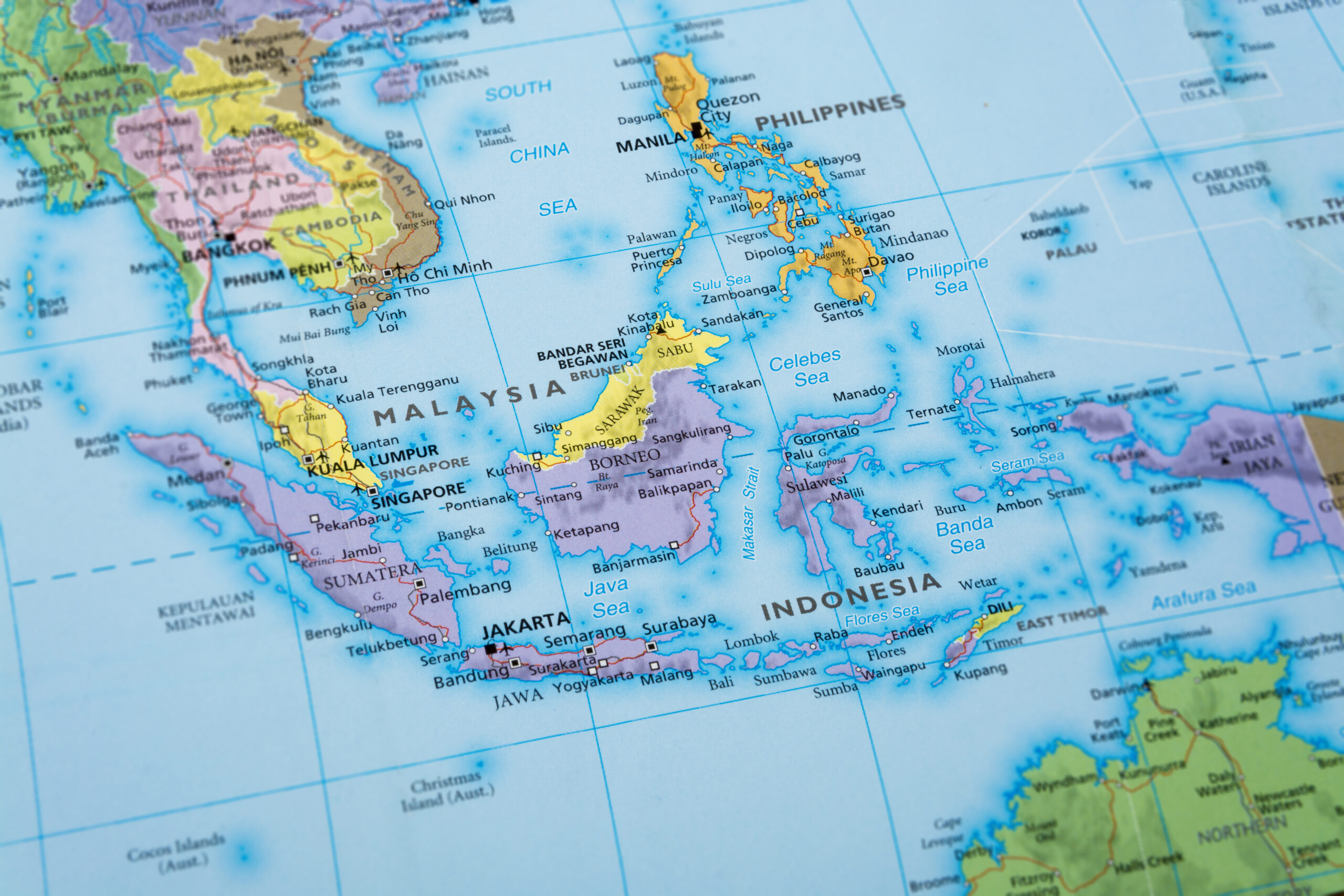Why Washington’s eyes are focusing on Southeast Asia
Civic, business leaders speak to fellows of first U.S.-ASEAN Institute for Rising Leaders, hosted by Johns Hopkins

As the relationship between the U.S. and China grows more complex and strained, Southeast Asia is increasingly seen as a potential bulwark against China’s rising power.
The Indo-Pacific is the world’s fastest-growing region and represents 40% of the world’s GDP. With China increasing its military activity in the South China Sea and growing more aggressive toward Taiwan, Southeast Asia grows strategically more important to the United States.
“More than ever before, we need partnerships, we need alliances, we need coalitions of countries willing to put their efforts, their resources, their minds into tackling these problems,” Secretary of State Antony Blinken said at a 2022 meeting of Australia, India, Japan, and the United States.
Civic and business leaders spoke to the importance of a U.S. alliance with these nations—and in particular the 10 members of the Association of Southeast Asian Nations (ASEAN)—at a recent reception for the fellows of the first U.S.-ASEAN Institute for Rising Leaders. The event was held at the Johns Hopkins School of Advanced International Studies in Washington, D.C., earlier this month.
The three panelists for the event were Jon Finer, deputy national security advisor; Cambodian ambassador Keo Chhea; and Marc Mealy, chief policy officer and senior vice president of the U.S.-ASEAN Business Council.
Key takeaways from their discussion:
CULTIVATING ‘PEOPLE-TO-PEOPLE’ TIES
“The history of the 21st century will largely be written in the Indo-Pacific. [President Biden’s Indo-Pacific strategy] calls for the United States to ensure that this region remains free and open, connected, prosperous, secure, and resilient.”
– Jon Finer, Deputy National Security Advisor
Finer, who has served in the Biden and Obama administrations, spoke about the importance of “people-to-people” ties between the U.S. and ASEAN countries, pointing to programs such as the Institute for Rising Leaders, the Fulbright fellowship, and the Southeast Asia Youth Leadership Program as examples.
“The strength of the U.S.-ASEAN partnership is anchored in the friendship shared by our combined 1 billion people,” he said.
BOLSTERING A STRATEGIC PARTNERSHIP
“The U.S. has committed to strengthening the strategic partnership.”
— Keo Chhea, Ambassador of Cambodia to the United States
President Biden hosted a U.S.-ASEAN Special Summit in May 2022 to strengthen ties between the nations and has launched joint projects focused on electric vehicle adaptation, conservation, and health care.
“We will build a better future—the better future we all say we want to see and we’re going to see for all one billion people in our countries,” Biden said at the summit.
In November 2022, the relationship between the U.S. and ASEAN was elevated to a comprehensive strategic partnership, a transition that “will ensure that every part of our government continues to pursue ambitious new forms of cooperation with ASEAN long into the future,” Finer said.
STRENGTHENING ECONOMIC INTEGRATION
“America’s relationship with the countries of Southeast Asia matters and is fundamental to our mutual shared prosperity, growth and development.”
— Marc Mealy, Chief Policy Officer and Senior Vice President, U.S.-ASEAN Business Council
The U.S. exported $76.4 billion to ASEAN countries in 2020, according to the most recent data from the Office of the U.S. Trade Representative. Imports in the same year were $231.3 billion.
This commerce benefits all parties, Mealy said: “America’s relationship with the countries of Southeast Asia matters and is fundamental to our mutual shared prosperity, growth, and development.”